The view is east showing rooftops of Belmont, a neighborhood north of Market St., with the Center City skyline in the far background. During World War II, blacks became the dominant racial group in Belmont. By 1960, they totaled 94 percent of the neighborhood’s population.
Historic trends in migration, immigration, housing, employment, education, income, and health are shown in maps and graphs drawn from the U.S. Census and other government documents.
Maps and graphs drawn from the U.S. Census and other government documents highlight historic trends in the following categories: migration and immigration, housing, employment, health, and income. The first story in this collection looks at migration and immigration to West Philadelphia in the first half of the twentieth century.
Stories in this Collection
 1900–1960 The first half of the 20th century witnessed dramatic shifts in the population composition of West Philadelphia. These changes were the result of two large migration streams. One stream was the “Great Migration,” which brought large numbers of African-Americans from southern states into northern cities. By 1960, African Americans were the majority race in West Philadelphia. The other migration stream consisted largely of “new immigrants” arriving from eastern and southern Europe prior to 1920, largely Russian-born Jews and Italians. |
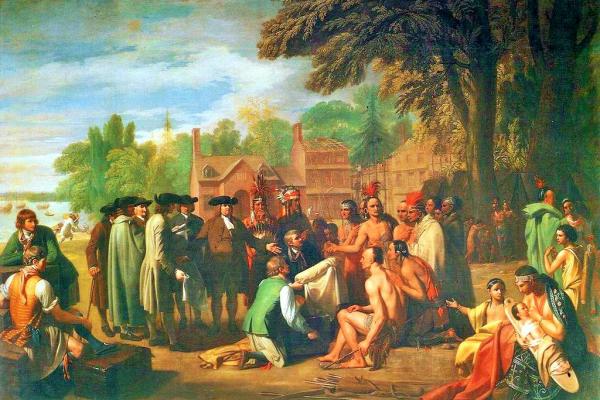 A nomadic people belonging to the Algonquin language family, the Lenape preceded the late 17th century European settlement of Pennsylvania by centuries. They were both hunters and agriculturalists and resided in bands along various rivers and streams. One area of their settlement was the west bank of the Schuylkill. They first encountered Europeans in the form of Dutch and Swedish settlers in the mid-17th century. From the late-17th to the mid-18th century, they were pushed westward by Quakers and other religious minorities that settled William Penn’s proprietary colony of Pennsylvania. |
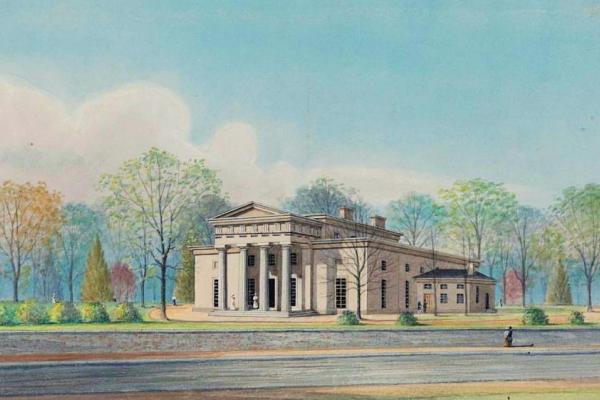 The first settlers in William Penn’s proprietary colony typically built modest log and frame houses. By the end of the 18th century large estates—with two-story brick and stone houses—had been developed along the banks of the Schuylkill River. Of note were the mansions and estates of the Hamilton and Powel families, whose names were assigned to the small villages of Hamilton (or Hamiltonville) and Powelton. |
Improvements in transportation in the first half of the 19th century included the replacement of ferries with horse-carriage and railway bridges that crossed the Schuylkill. These bridges facilitated a more efficient flow of agricultural and artisan goods between the city and its western hinterland area. The signficance for Blockley Township was economic and residential growth. |
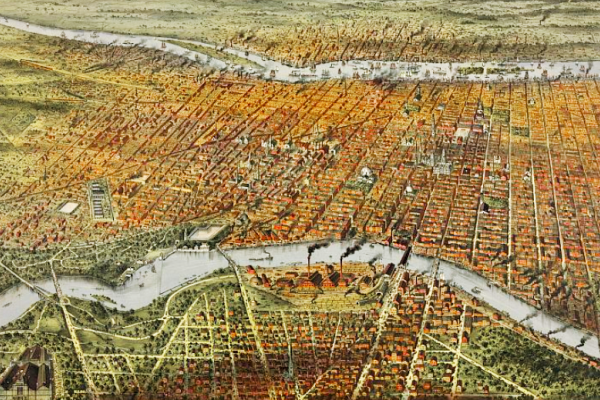 The Pennsylvania’s Consolidation Act of 1854 incorporated Blockley (West Philadelphia) into a vastly expanded City of Philadelphia. The benefits of consolidation included increased efficiencies achieved through coordinated city services, planned growth, and public works such as train stations and grand buildings—all symbolizing Philadelphia’s rising cosmopolitan stature. |
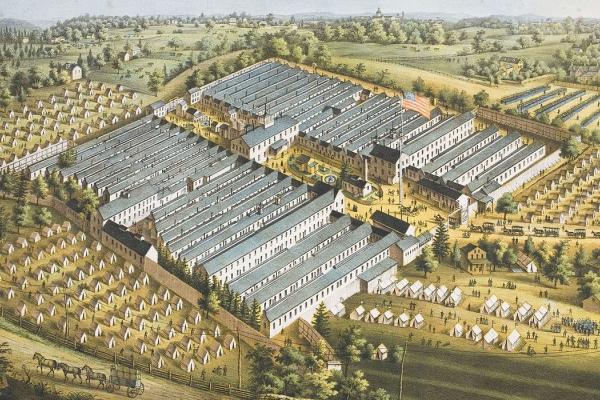 The famous Philadelphia Zoo has been in operation since 1874, just two years before the Centennial Exposition of 1876, whose fairgrounds extended near the Zoo. Over the past 150 years, the Centennial grounds have evolved as a cultural landscape integrated into West Fairmount Park. The other venue of national importance was the Satterlee General Hospital, constructed for soldiers sick or wounded on Civil War battlefields. |
 Transportation innovation and real estate speculation enabled a new residential West Philadelphia to emerge. By the end of the 19th century, West Philadelphia’s landscape was formed as a streetcar suburb in the city. But developments did not unfold instantly or uniformly. The building of homes did not proceed as a sequential push westward to the area’s western boundaries, but rather in pocketed ways. And even within pockets of development, the filling-in of home building occurred gradually. The primary foci of Part I are the emergent neighborhoods of Hamilton Village, Powelton Village, Mantua, and Hestonville. |
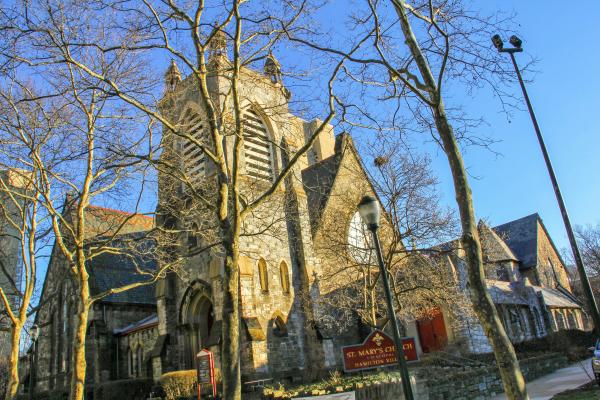 In the National Period, Philadelphia was a leader in religiously inspired innovations for the rehabilitation of indigent, criminal, and mentally ill persons. West Philadelphia was the site of two of the most prominent innovations: the Blockley Almshouse (later the Philadelphia General Hospital) and the Pennsylvania Hospital for the Insane. As the 19th century wore on, West Philadelphia saw the rise of institutions of higher learning (the University of Pennsylvania and the Drexel Institute), private hospitals (the Hospital of the University of Pennsylvania and Presbyterian Hospital), communities of faith, sundry elementary schools, and benevolent and charitable institutions. |